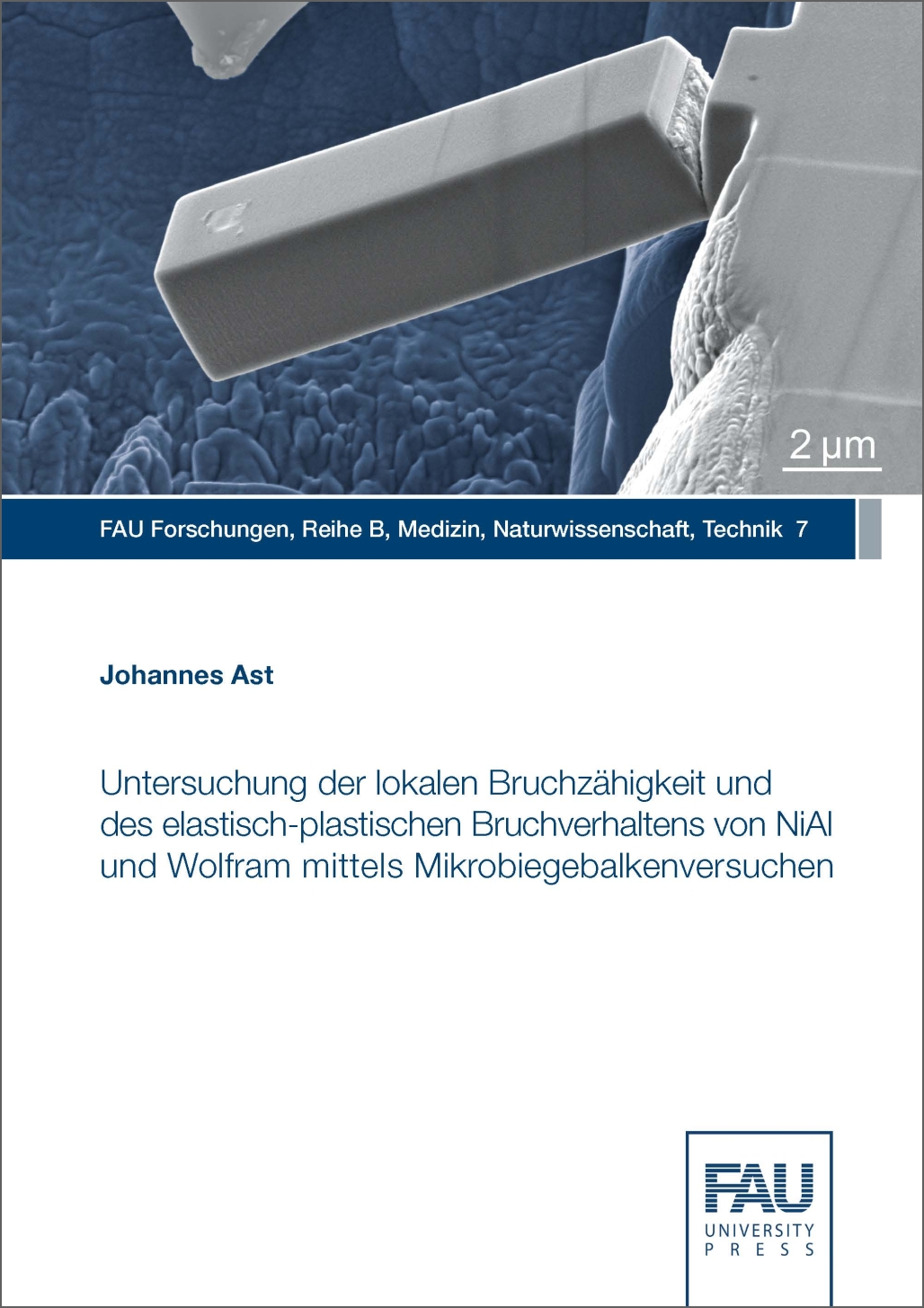Description
The objective of this work was to get an improved understanding of the size dependence of the fracture toughness. For this purpose notched micro-cantilevers were fabricated ranging in dimensions from the submicron regime up to some tens of microns by means of a focused ion beam. B2-NiAl and tungsten were chosen as model materials as their brittle to ductile transition temperatures are well above room temperature. In that way, fracture processes accompanied by limited plastic deformation around the crack tip could be studied at the micro scale. For this size regime, new methods to describe the local elastic-plastic fracture behavior and to measure the fracture toughness were elaborated. Particular focus was set on the J-integral concept which was adapted to the micro scale to derive crack growth from stiffness measurements. This allowed a precise analysis of the transition from crack tip blunting to stable crack growth which is necessary to accurately measure the fracture toughness.
Experiments in single crystalline NiAl showed for the two investigated crack systems, namely the hard and the soft orientation, that the fracture toughness at the micro scale is the same as the one known from macroscopic testing. Thus, size effects were not found for the tested length scale. The addition of little amounts of iron did not affect the fracture toughness considerably. Yet, it influenced the crack growth in those samples and consequently the resistance curve behavior.
Concerning experiments in single crystalline tungsten, the fracture toughness showed a clear dependency on sample size. The smallest cantilevers fractured purely by cleavage. Larger samples exhibited stable crack growth along with plastic deformation which was recognizable in SEM-micrographs and quantified by means of EBSD measurements. Just as in macroscopic testing, the investigated crack system {100} demonstrated a dependency on loading rate with higher loading rates leading to a more brittle behavior. This is linked to the thermally activated dislocation mobility which is more constrained in those samples. Investigations on plastically predeformed samples were performed in order to study the influence of the dislocation density on the fracture behavior. It was found that the fracture toughness was again not affected but that the predeformed samples failed at an earlier stage at lower J-integrals. This is due to the lower mobility of the dislocations emitted from the crack tip in consequence of the high amount of strain hardening and the higher flow stress in those samples. Experiments in ultrafine-grained tungsten revealed a fracture behavior which was more brittle than expected. A single grain at the crack front with its crystallographic orientation being prone to cleavage failure can decisively influence the fracture behavior at the micro scale.


Reviews
There are no reviews yet.